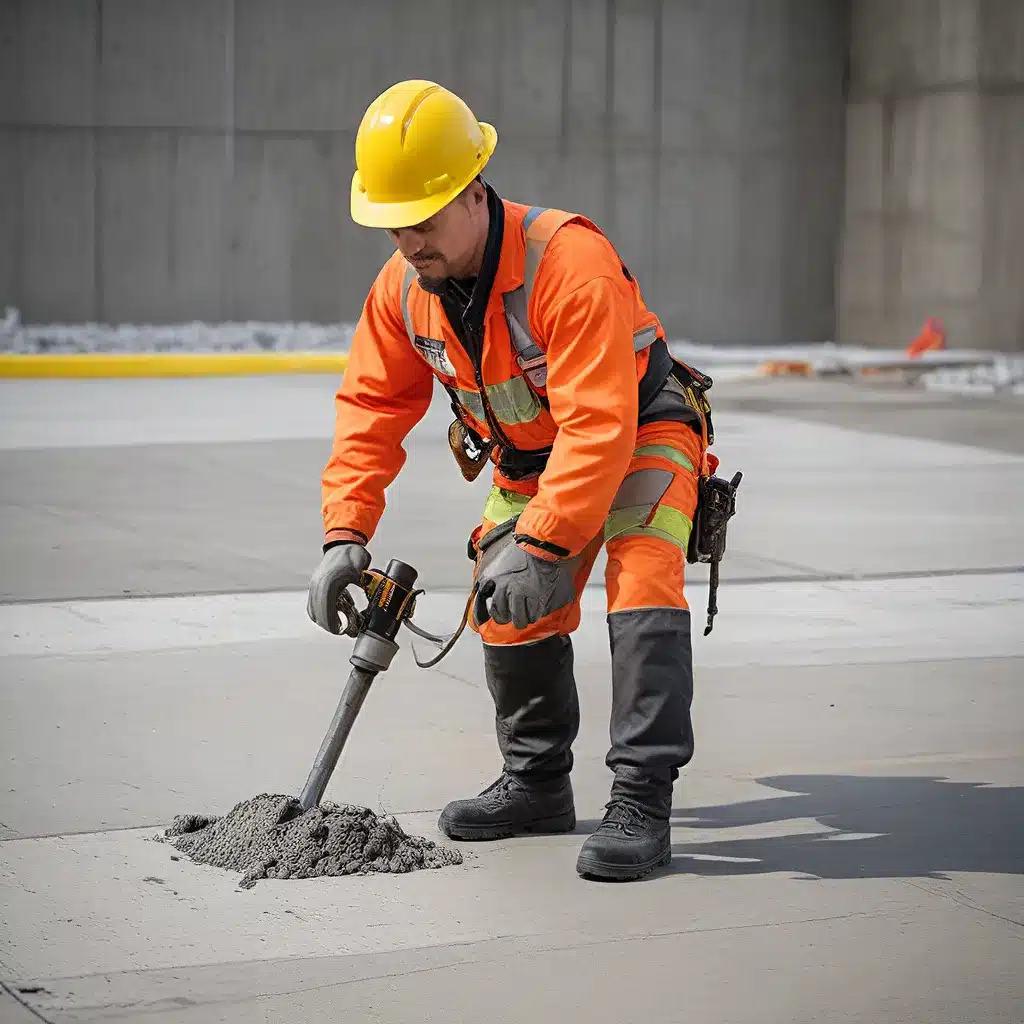
Discovering the Extraordinary Potential of Smart Concrete
Imagine a world where concrete, the unsung hero of the construction industry, could not only withstand the elements but also detect and repair its own damage. Well, my friends, that world is no longer confined to the realms of science fiction – it’s here, and it’s called smart concrete.
As the second most consumed material on the planet, falling only behind water, concrete has long been the backbone of our infrastructure. But, like any workhorse, it’s had its fair share of challenges. That was, until the brilliant minds in the industry decided to give this ubiquitous building material a much-needed upgrade.
Unlocking the Smartness of Concrete
So, what exactly is smart concrete, you ask? Well, it’s not just your average cement mixture. No, smart concrete is a technological marvel that has been imbued with a wide range of incredible capabilities. From self-healing properties to damage-sensing abilities, this revolutionary material is poised to shake up the construction industry in a big way.
According to ISHN, smart concrete’s “smartness” typically comes through four main avenues: creating different material compositions, implementing special processing, integrating new functional components, or modifying its microscopic structure. This means that these advanced concretes can do things that traditional varieties simply can’t, like detecting cracks, repairing themselves, and even generating heat.
Increased Strength and Resilience: A Safer Future
One of the most impressive features of smart concrete is its sheer strength and resilience. By incorporating materials like carbon fiber and graphite, these mixtures can often withstand even more force than their conventional counterparts. This added structural integrity has significant safety benefits, making buildings and infrastructure more resistant to earthquakes, high winds, and other natural disasters.
But the advantages don’t stop there. Some smart concrete formulations, like crystalline waterproof concrete, offer hydrophobic properties that repel water, keeping occupants dry and protecting sensitive components like rebar from the elements. This increased resilience not only enhances safety but also extends the lifespan of the structures they support.
Damage Detection and Self-Repair: Preventing Catastrophe
Imagine a world where concrete could tell you when it’s in trouble. Well, that’s precisely what smart concrete can do. By incorporating conductive materials like carbon fiber or steel shavings, these advanced mixtures can actually conduct electricity. This means that engineers can use this conductivity to monitor a structure for any signs of damage, such as cracks or warping, simply by running an electrical current through the concrete.
But the real game-changer is the self-repairing capabilities of some smart concrete varieties. By incorporating shape memory polymers (SMPs), these materials can automatically fill in cracks and fix warping as soon as they occur. This is a game-changer for public infrastructure like highways, where disruptions can cause major headaches for commuters and authorities alike.
Heating Properties: Melting Away Winter Woes
Speaking of public infrastructure, smart concrete’s heating properties are poised to revolutionize the way we deal with the dreaded winter weather. With over 70% of the nation’s roads located in snowy areas, and 24% of weather-related crashes stemming from affected pavement, the traditional methods of salting, plowing, and de-icing have long been a thorn in the side of transportation authorities.
But fear not, for conductive smart concrete holds the key to a safer, more efficient solution. By harnessing the power of electricity or even natural sunlight, these advanced mixtures can heat themselves, melting snow and ice in a fraction of the time it would take traditional methods. This not only makes for safer driving conditions but also reduces the environmental impact of deicing chemicals and the need for energy-intensive plowing operations.
Enabling the Smart City Revolution
Smart concrete’s potential goes far beyond just enhancing safety and efficiency. It’s also poised to play a pivotal role in the burgeoning smart city movement. By incorporating IoT sensors into the concrete, roads and other infrastructure can become part of a vast network of interconnected systems.
Imagine a city where the roads themselves can detect traffic patterns and weight, relaying this information to connected stoplights and navigation apps to reduce congestion and improve transportation efficiency. Or a municipality where the concrete throughout the city can provide real-time updates on when buildings or roads need maintenance, allowing for proactive repairs and preventing disruptive accidents.
The Future is Bright, and It’s Concrete
As the construction industry continues to embrace the power of innovation, smart concrete is poised to be a game-changer. From its impressive strength and resilience to its damage-sensing and self-repairing capabilities, this advanced material is revolutionizing the way we build and maintain our infrastructure.
And the best part? This is just the beginning. As research and development in this field continue to advance, the possibilities for smart concrete will only continue to grow, paving the way for a future that is not only safer and more efficient but also more sustainable and convenient for all.
So, the next time you walk on a road, drive across a bridge, or set foot in a towering skyscraper, remember that the unsung hero of the construction industry is being transformed before our very eyes. The future of concrete is here, and it’s nothing short of extraordinary.

